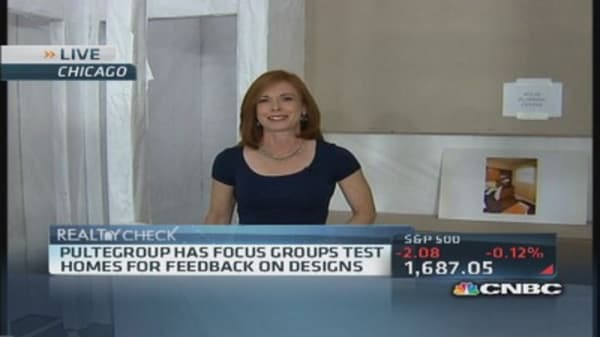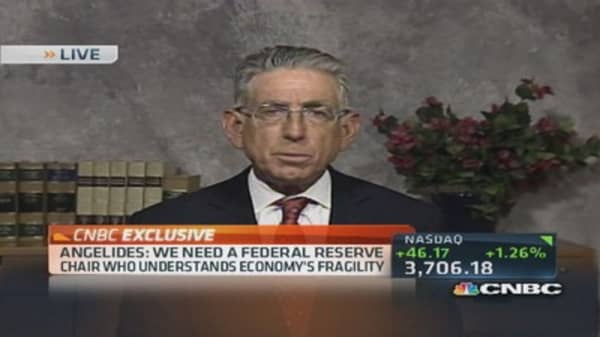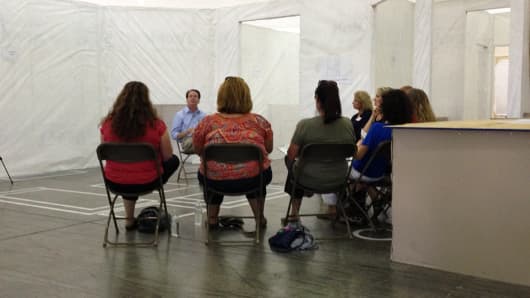Home builders are facing a tough buyer market, as mortgage interest rates rise and wage growth struggles. They are facing soaring land costs as well as limited labor and supplies. This pushed Pulte to raise prices 9 percent in the second quarter of this year from a year ago, even as the company faced a 12 percent drop in net new orders.
(Read more: Banks hit the brakes on mortgage operations)
The summer has not proved much better for the builders. Mortgage applications to purchase a newly built home dropped 14 percent from July, according to a new report from the Mortgage Bankers Association. Still, demand is there, and after building next to nothing during the housing crash, U.S. builders are now faced with renewing the nation's housing stock. That, Pulte executives say, is why innovation is so important.
"When I was at my first conference, I met someone and referenced that I was doing market research," said Ian Wild, Pulte's director of market research. "The fellow said, 'Let me tell you how I do market research. I get in my car and I drive down the road to the competition and I say what's selling and why?' And as a result of that, the innovation in the home building industry is, well, there's very little."
So on a hot September morning, with the roar of O'Hare's traffic overhead, small groups of homeowners wind their way through the rows of homes in frames of back doors and out frames of front doors, gripping their clipboards and checklists, and eyeing every detail and every measure of space.
"It's much easier than looking at a blueprint, where you keep turning it around trying to understand which way the door swings. Will this be this way?" asked Chicago-area homeowner Sasha Zingerman, motioning. "It's much more comprehendible, and you can physically picture yourself in that space. You could see how you would orient yourself there."
The subjects are paid to offer their opinions, and after the tours they sit down with a moderator to tell what they like, and more importantly what they do not like.
(Read more: Jobs report tempers mortgage rates)
"I like how it all flows together. It's open, it's airy, there's a lot of light coming in. It seems like a happy environment," said one woman.
Pulte gets at least five new design ideas from each of these events, which are held across the country, according to Wahl. The latest trends are full home automation (running every system in the home through a smartphone), larger mud rooms, or as Pulte calls them, Everyday Entries. Dining rooms are out, larger kids' bathrooms are in.
"I don't think I would ever use the formal dining room, so it would be a wasted space for a room that I don't use often enough," added another.
After living through the worst housing crash since the Great Depression, today's home buyers are more skeptical and less trusting of home builders. Some blame builders for throwing up far too many houses, selling them to speculators and turning a blind eye to an overheated market that was bound to bust. They are treading back in slowly and finding higher prices.






